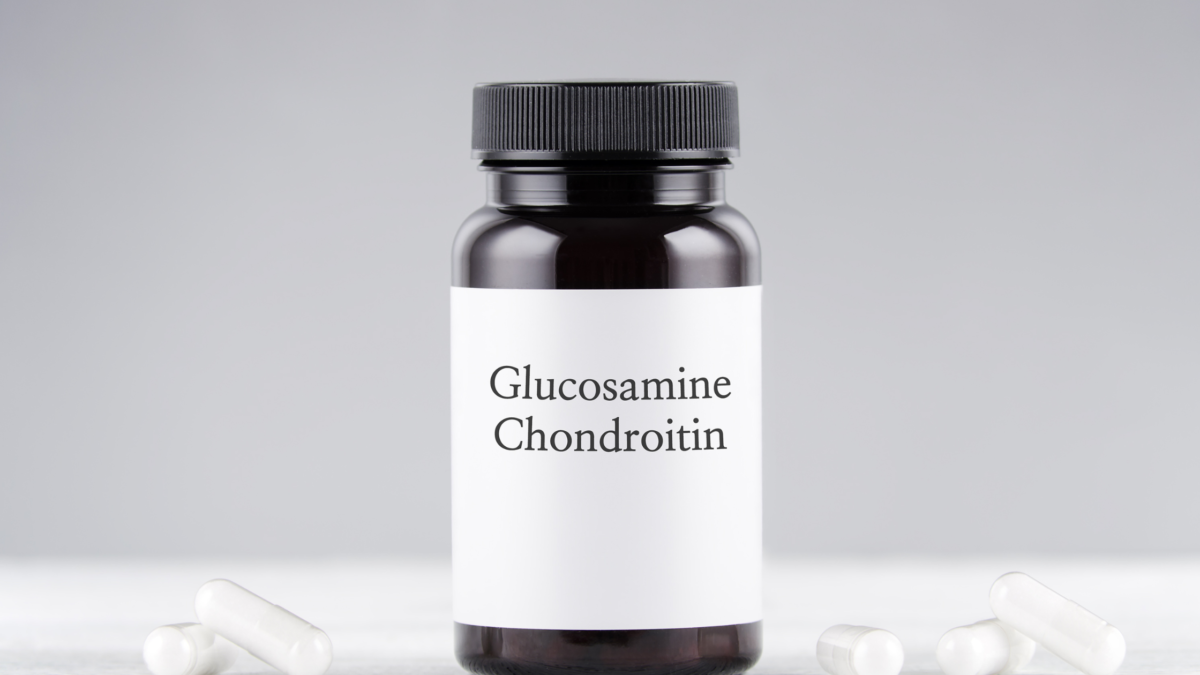


Medically Reviewed By Margaret Etudo. Written By The Vitamins For Woman Team.
Glucosamine has long been promoted as a natural remedy for arthritis pain, but what does the latest research say?

Arthritis continues to affect millions worldwide, with osteoarthritis being the most common form.
For decades, glucosamine has been recommended as a dietary supplement that may alleviate joint pain and slow cartilage degeneration.
But with so many conflicting claims, you might wonder: Does glucosamine work for arthritis?
This comprehensive 2025 guide breaks down the science behind glucosamine, including the differences between its forms, its effectiveness as determined by clinical studies, and optimal usage for relief.
Whether you have been newly diagnosed with osteoarthritis or are seeking alternative support for painful joints, understanding what glucosamine does and doesn’t do for arthritis is crucial in making informed treatment choices.
Can glucosamine help your joints feel better, or is it just another overhyped supplement?
Glucosamine is a natural compound found in your cartilage, which cushions joints and allows smooth movement.
In supplements, it is typically derived from shellfish shells or produced synthetically.
The primary proposed mechanism is that glucosamine stimulates the production of proteoglycans and glycosaminoglycans, which are critical building blocks that maintain cartilage structure and elasticity.
Additionally, research indicates that glucosamine exerts mild anti-inflammatory effects. Glucosamine inhibits interleukin-1 (IL-1), a cytokine involved in cartilage degradation in osteoarthritis.
By reducing IL-1 activity, glucosamine may help preserve existing cartilage and reduce joint inflammation over time.
However, it is essential to note that glucosamine is not a painkiller like NSAIDs. Its effects are gradual and often subtle, targeting the underlying degradation rather than providing immediate pain relief.
When shopping for supplements, you’ll notice two primary forms: glucosamine sulfate and glucosamine hydrochloride (HCl). Understanding their differences is vital for choosing an effective product.
Glucosamine sulfate is the form most studied in osteoarthritis trials. It combines glucosamine with sulfate, which may play an additional role in the synthesis of cartilage.
Studies suggest glucosamine sulfate is better absorbed and more effective in slowing joint space narrowing and alleviating symptoms than glucosamine HCl.
Glucosamine hydrochloride (HCl), on the other hand, is a purer form containing more glucosamine per dose but lacks the sulfate component. While theoretically it should be equally effective, research indicates otherwise.
Is glucosamine for arthritis truly effective, or is it all marketing hype? Here is what rigorous scientific studies have found about its benefits and who may gain the most relief.
Numerous trials have investigated the role of glucosamine in osteoarthritis management, with mixed results.
Studies have found that daily supplementation with 1,500 mg of glucosamine sulfate significantly reduces symptoms and slows joint space narrowing in patients with knee osteoarthritis over three years.
Participants experienced reduced pain and improved function compared to those receiving a placebo.
However, not all studies agree. Research has concluded that the benefits of glucosamine were minimal and not clinically significant in some trials.
Differences in study design, the forms of glucosamine used, and patient populations may account for these inconsistencies.
Overall, recent reviews suggest that glucosamine sulfate may provide modest pain relief and protect joint cartilage, particularly in mild to moderate osteoarthritis, while glucosamine HCl offers little benefit.
Glucosamine is most beneficial for people with early to moderate osteoarthritis who are seeking to slow disease progression rather than simply mask pain.
Individuals with severe OA and advanced cartilage loss may not experience significant improvement, as glucosamine cannot rebuild entirely degenerated cartilage.
Patients seeking an alternative to NSAIDs due to gastrointestinal risks also find glucosamine a preferable option. Although slower-acting, it carries fewer side effects.
Taking glucosamine correctly is essential to seeing any real joint benefits. Here are dosage guidelines and information on how combining it with other supplements, such as chondroitin, can enhance its effects.
The standard recommended Dosage is 1,500mg of glucosamine sulfate per day, typically divided into one or two doses.
Most studies investigating its efficacy used this dose over several months. Lower doses are unlikely to provide therapeutic benefits, while higher doses do not show increased effectiveness.
Because glucosamine works gradually, you may need to take it consistently for at least 4–8 weeks before noticing improvement.
It is advisable to consult your doctor before starting, especially if you are on blood thinners or have underlying medical conditions.
Many joint supplements combine glucosamine with chondroitin sulfate, another component of cartilage that may help improve elasticity and reduce pain.
While some trials suggest that combining glucosamine and chondroitin yields better results than glucosamine alone, others find minimal additive benefits.
Additionally, MSM (methylsulfonylmethane) is often added for its anti-inflammatory and analgesic properties.
MSM does not build cartilage like glucosamine or chondroitin, but it may enhance pain relief, especially in arthritis that affects multiple joints.
Choosing the right glucosamine supplement can make a significant difference in managing your arthritis. Here are five top-rated glucosamine products to consider for joint health in 2025:
Doctor’s Best Glucosamine Sulfate provides 1,500mg of glucosamine sulfate per serving, the clinically studied dose for osteoarthritis support.
This product utilizes pure sodium-free glucosamine sulfate, stabilized with potassium chloride, making it ideal for individuals monitoring their sodium intake.
Users consistently report improved knee comfort and reduced stiffness after two months of daily use, especially those with mild to moderate osteoarthritis.
Schiff’s Glucosamine Plus MSM is one of the most popular joint health supplements in the US.
Each serving delivers 1,500mg of glucosamine hydrochloride and 1,500mg of MSM. MSM (methylsulfonylmethane) offers anti-inflammatory benefits and may help alleviate joint pain more quickly, particularly for individuals with arthritis affecting multiple joints.
While Schiff uses glucosamine HCl instead of sulfate, many users still report pain relief and improved flexibility within a month of consistent use, likely due to MSM’s synergistic effects.
NOW Foods offers a triple-strength joint support formula combining glucosamine sulfate (1,100mg), chondroitin sulfate (1,200mg), and MSM (300mg) per three-capsule serving.
This combination targets cartilage regeneration (glucosamine), cartilage elasticity (chondroitin), and inflammation (MSM), making it suitable for individuals with moderate to severe arthritis symptoms who seek comprehensive support.
The capsules are free from artificial colors, dairy, soy, and gluten. NOW Foods is known for its rigorous third-party testing to ensure purity.
Kirkland Signature Glucosamine with MSM provides 1,500 mg of glucosamine hydrochloride and 1,500 mg of MSM per serving, formulated to support joint comfort and mobility.
As Costco’s house brand, it offers excellent bulk pricing and is USP-verified for potency and purity, ensuring that what is on the label is in the bottle.
Despite using glucosamine HCl instead of sulfate, many customers report reduced joint pain, particularly when used in conjunction with other bone health supplements, such as vitamin D and calcium.
Nature’s Bounty Glucosamine Chondroitin Complex combines 1,500mg of glucosamine hydrochloride, 1,200mg of chondroitin sulfate, and 500mg of MSM per serving to provide a holistic approach to joint health.
This formula targets cartilage support, elasticity, and inflammation reduction.
Users report noticeable improvements in joint flexibility within 4-6 weeks, with a decrease in complaints of morning stiffness.
Glucosamine does not offer immediate pain relief. Most people begin noticing improvements after 4 to 8 weeks of daily use. For some, it may take up to three months to feel a significant difference, as the supplement works gradually to support cartilage health and reduce inflammation.
No, glucosamine cannot regrow cartilage that is already lost. Its primary role is to slow further degradation and maintain the existing cartilage structure. It may also support the repair of minor cartilage damage, but it does not regenerate severely worn-out cartilage seen in advanced osteoarthritis.
People with shellfish allergies should avoid glucosamine derived from shellfish, though vegan synthetic options are available. Additionally, those on blood-thinning medications like warfarin should consult a doctor before use, as glucosamine may interact and increase bleeding risks.
Glucosamine remains one of the most popular supplements for arthritis, especially osteoarthritis of the knee. Evidence suggests that glucosamine sulfate, not hydrochloride, may offer mild to moderate relief and slow cartilage breakdown in people with early-stage arthritis.
While it is not a cure or an instant painkiller, when combined with lifestyle measures such as weight management and bone support vitamins, it can play a crucial role in comprehensive joint care. Always consult your doctor before adding glucosamine to your regimen, particularly if you have allergies or take medications with potential interactions.

medically reviewed by margaret etudo, BPharm. written by the vitamins for woman team.